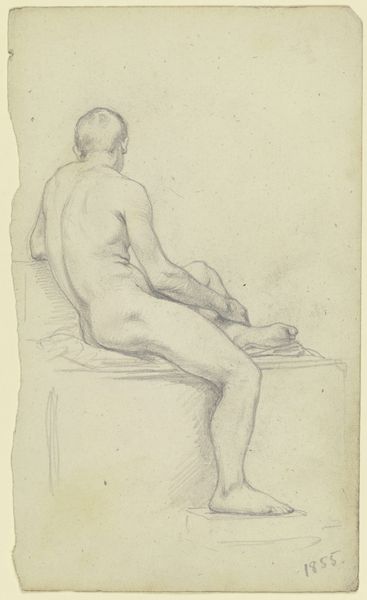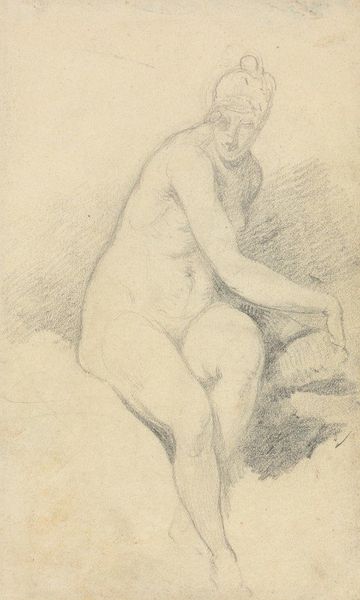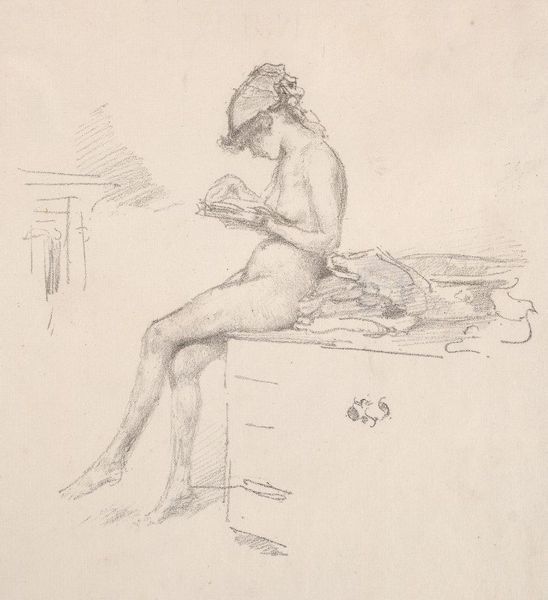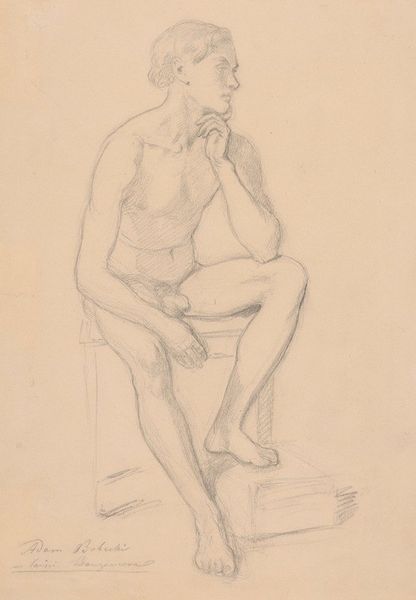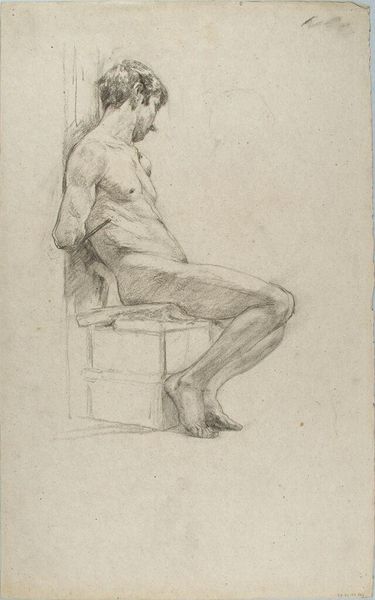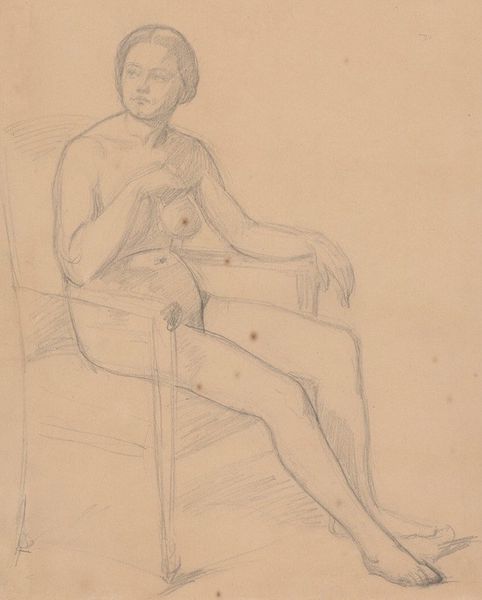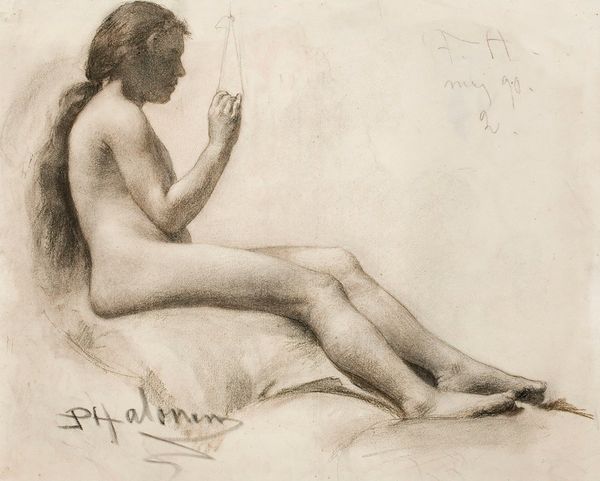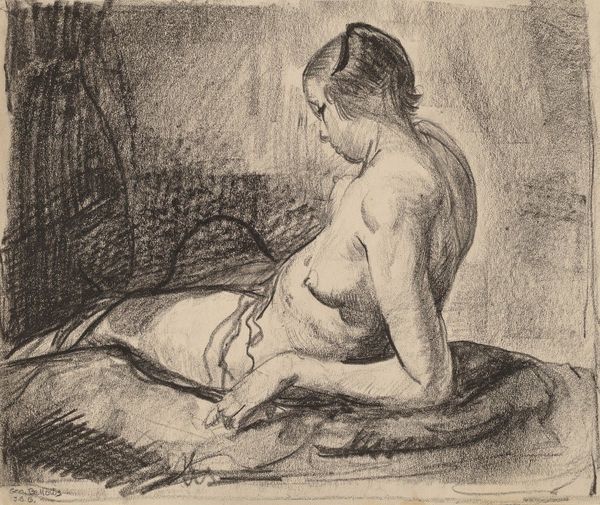
drawing, pencil
#
drawing
#
charcoal drawing
#
figuration
#
pencil drawing
#
pencil
#
academic-art
#
nude
Copyright: Public Domain: Artvee
Curator: Let’s discuss this pencil drawing by Pierre Puvis de Chavannes, entitled “Study of a Seated Nude Female Model Drawing,” likely created between 1888 and 1898. What’s your initial response? Editor: Well, immediately I'm struck by the quietness of it. There’s an intense focus suggested by the pose—and the very visible process, that build-up of pencil lines. It feels intimate, a shared moment somehow. Curator: Absolutely. Notice how Puvis de Chavannes used charcoal and pencil not merely for outline, but to suggest weight, form, and the palpable textures of the paper and skin. It speaks to a very academic artistic labor. Editor: There's an almost…ghostly quality. Like we're seeing not just the model but the artist's presence as well, lingering in the marks. I find the stark, classical lines a little unsettling but that contributes to the tension, right? It makes you wonder about their exchange during the drawing session. Curator: Indeed. And it's worth considering that this study comes from a period where the figure was intensely scrutinized, anatomically and aesthetically. This piece emphasizes the studio context, revealing the labor and social interactions involved in artistic production. Editor: True. I'm imagining her perched there—not a goddess on Olympus, but someone holding still on a wobbly stool. Is she also creating her own drawing, the "model drawing" mentioned in the title? Curator: That's certainly how I read it. The layered representation invites questions of authorship and perspective—the labor behind representation, basically. Editor: It adds a whole meta-layer. It’s a study OF someone creating! In a way, the work questions how the act of artistic creation makes us all vulnerable, both artist and model are putting themselves on the line. Curator: Precisely. And the gifting inscription hints at the community circulating such works, and its role within artistic collaboration and teaching. Editor: I think there’s something undeniably beautiful about it, seeing that exchange of ideas, the creation of a body and the sharing of creativity. Curator: Indeed. Looking at the material evidence and the social elements offers insight into this seemingly quiet encounter, challenging traditional notions of genius by examining the network of people involved. Editor: For me, that almost raw and immediate process gives me this feeling of genuine connection. The material speaks and offers glimpses to how these creative lives intersect, for that moment in time, for this particular piece of paper.
Comments
No comments
Be the first to comment and join the conversation on the ultimate creative platform.
